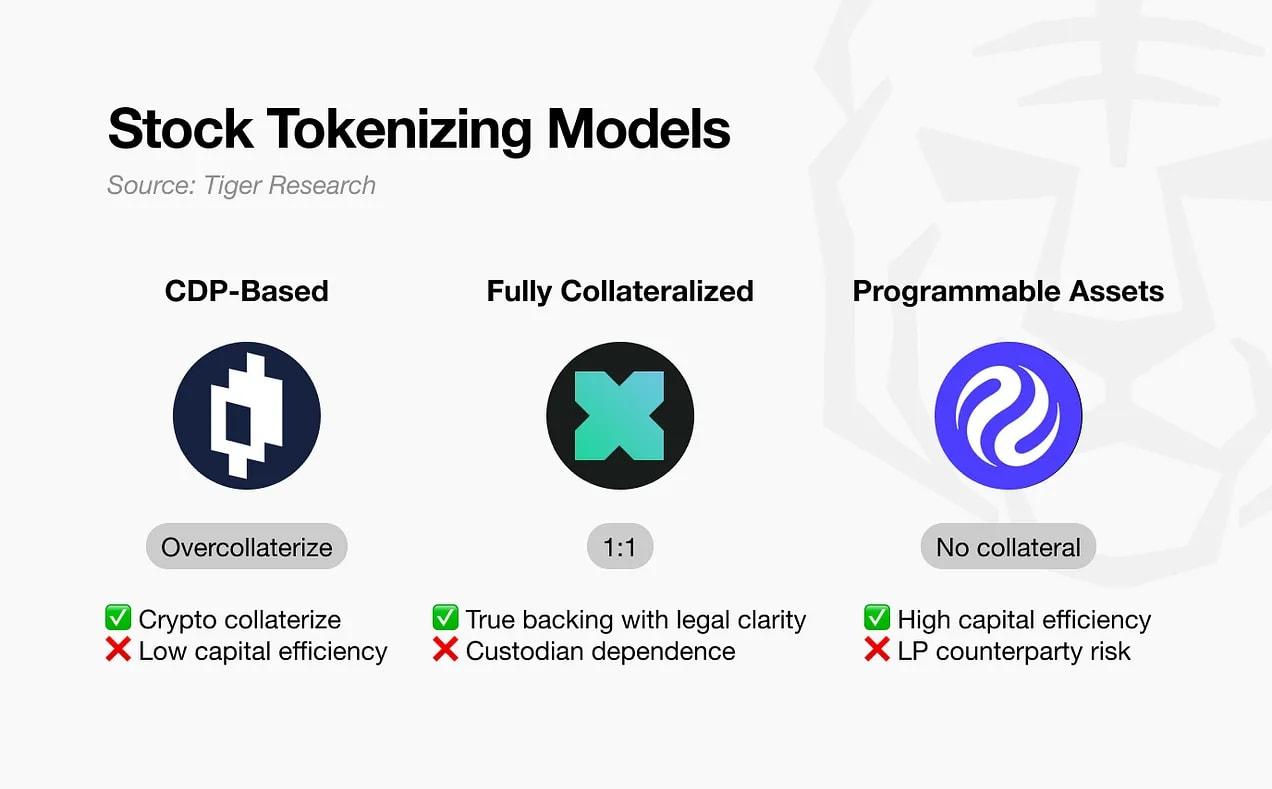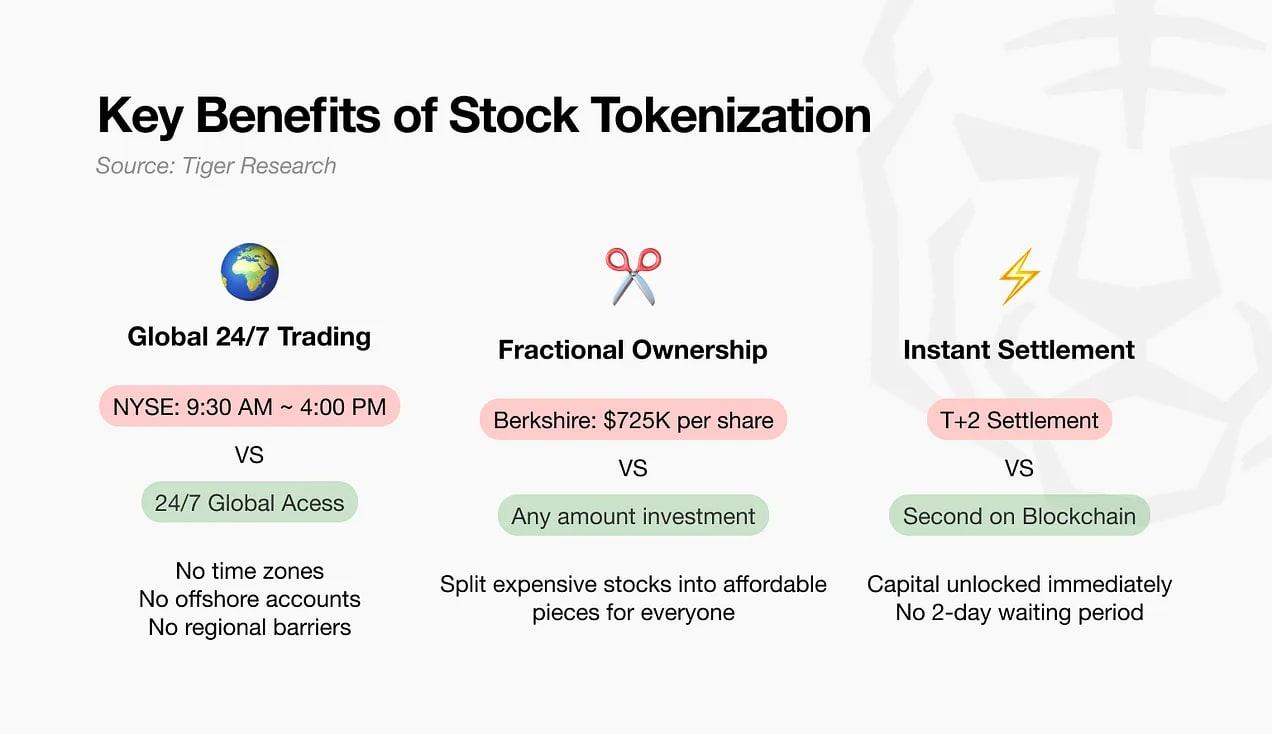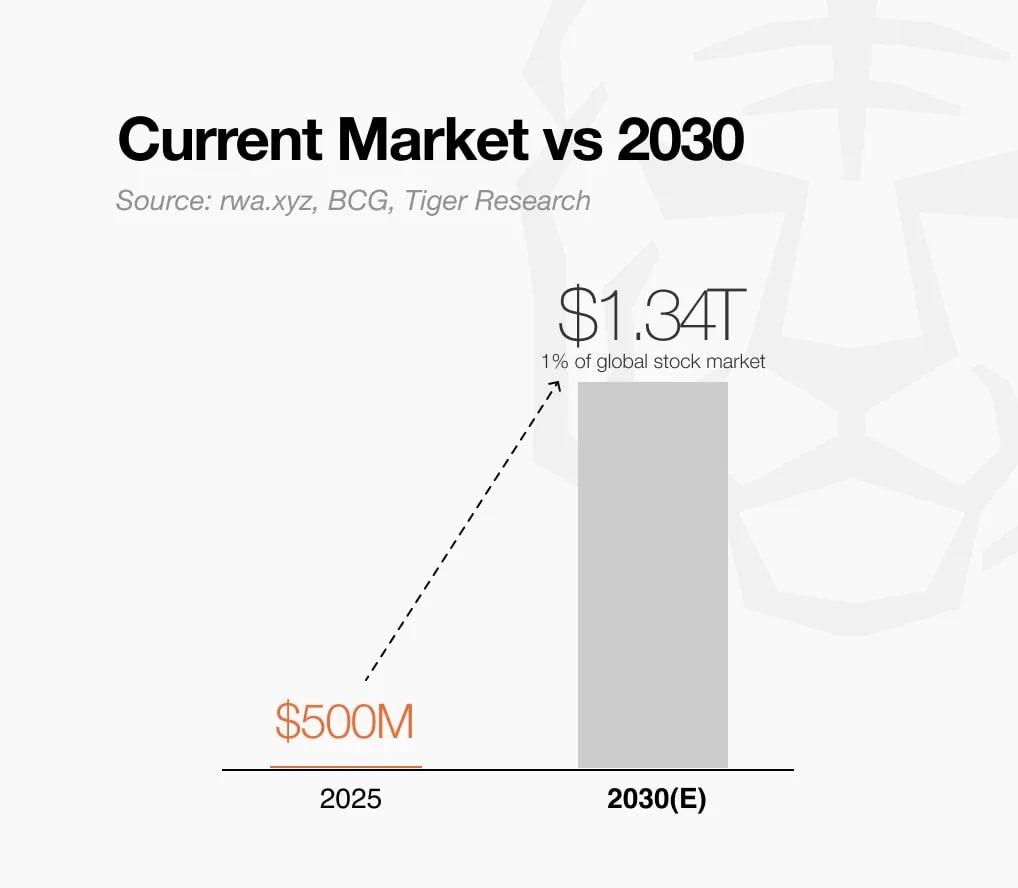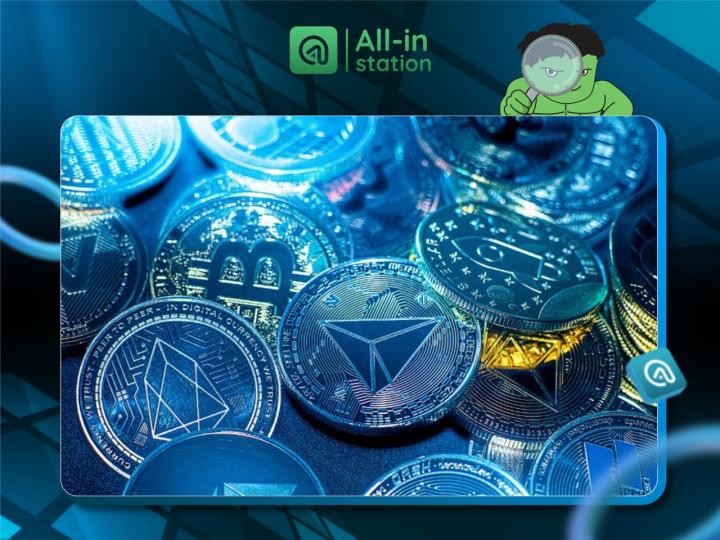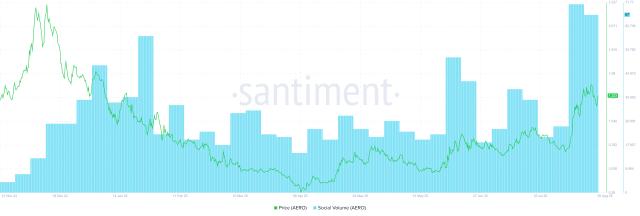This report is compiled by Tiger Research, analyzing the evolution of the tokenized stock market from a valuation of $500 million towards a potential $1.34 trillion by 2030, and examining the key players in this ecosystem.
Market Opportunity: Currently, stock tokenization is valued at around $500 million, but has the potential to grow to $1.34 trillion by 2030 if only 1% of global stocks are tokenized. This reflects a potential 2,680x growth, driven by the convergence of regulatory clarity and infrastructure maturity, expected to occur around 2025.
Value Proposition: Tokenized stocks enable 24/7 global trading and fractional ownership. Its key added value is integration with DeFi, where investors can use stocks as collateral for loans or generate yields from everything without selling the stocks.
Why This Has Great Potential: Unlike other real-world assets (RWA) categories that must create demand from scratch, stock tokenization directly enters the global stock market worth $134 trillion and has real structural problems. The combination of existing demand and friction points that can be addressed makes tokenized stocks the most viable RWA category for mass adoption.
1. Convergence of Two Worlds: Blurring Boundaries
The traditional financial ecosystem and crypto industry are now moving closer to each other.
On one side, large financial institutions like Citigroup and Bank of America are preparing to issue stablecoins. On the other side, Web3 projects like Injective and Backed Finance are beginning to tokenize major stocks such as Apple and Tesla on blockchain networks.
As traditional institutions start adopting crypto, and Web3 projects tokenize traditional financial assets, the boundaries between them are beginning to blur.
This convergence is further accelerated by the "Crypto Week" moment in the United States, a critical period where a series of regulatory activities are focused on digital assets. The approval of the GENIUS Act has brought stablecoins into the federal regulatory framework. As a result, Wall Street and DeFi are no longer competitors, but are starting to appear as strategic partners.
Traditional finance has clear incentives to engage with crypto: the crypto market has proven profitable, while major financial brands bring a level of trust that has been lacking in the crypto industry. However, the opposite direction, why crypto projects want stocks to be tokenized, is not yet fully clear. This market is still new, and the motivations of the players are still diverse and speculative.
This report answers this question by analyzing the structure of the tokenized stock market and profiling its key players.
Explore the Web3 ecosystem in Asia more deeply with Tiger Research. Join over 11,000 pioneers to get exclusive and up-to-date insights into market conditions.
2. What is Stock Tokenization?
Stock tokenization refers to the conversion of traditional stocks into digital tokens on a blockchain network. These tokens are designed to reflect the underlying stock's value but usually do not come with ownership rights such as voting in shareholders' meetings. Most of these tokens are classified as derivatives, not direct stock ownership.
The first wave of stock tokenization emerged around 2021. However, most early models like Mirror Protocol failed to develop due to systemic inefficiencies and structural risks, especially in ecosystems like Terra. Newer approaches now introduce better mechanisms with healthier capital dynamics and stronger compliance frameworks, led by projects like Injective and xStocks.
Interest in stock tokenization has increased with the Real-World Assets (RWA) trend, which is now one of the main narratives in the crypto market.
Beyond direct benefits like liquidity and cost efficiency, stock tokenization also opens up new use cases through its comparable nature. Because it exists outside traditional regulatory silos, these tokens can be used as collateral in lending protocols or to generate yields in DeFi applications.
For example: An investor in Indonesia who wants exposure to Tesla stocks would typically need to open an account with a foreign broker, fill out complex documents, bear currency conversion costs, and be limited to specific market hours. With tokenized stocks, the same investor can instantly buy Tesla token fractions via smartphone and use them in DeFi protocols to borrow, provide liquidity, or generate additional yield.
3. The Right Scenario: Towards 1% Tokenization of Global Stocks
Stock tokenization is currently in its early stages. According to data from rwa.xyz, the current market size is around $500 million. Compared to the global stock market value of $134 trillion, this represents only 0.0004%. However, if just 1% of global stocks are tokenized in the next decade, this market has the potential to grow to $1.34 trillion—showing a 2,680-fold growth from current levels.
3.1. Turning Point in 2025
Q2 of 2025 is expected to be a critical turning point. Although still early, stock tokenization volume in the Solana ecosystem has surged from $15 million to $100 million in just one month, a 566% growth.
More importantly, regulated players are entering the market. Large fintech companies are expanding tokenization services globally, including Robinhood's announcement of launching tokenization services in Europe. As the market expands from North America to Europe and Asia, regulatory clarity will be a key catalyst. Specifically, if stock tokenization officially begins under the EU's MiCA framework, market growth is predicted to increase sharply.
3.2. Potential and Success Standards by 2030
To achieve 1% tokenization of the global stock market by 2030, there must be a compelling reason for investors to shift from traditional systems to tokenization platforms. This transition will only occur if four key conditions are met simultaneously:
First, cost efficiency must be proven tangibly.
Theoretical savings of 50-70% in broker, transaction settlement, and administrative costs need to be validated in the field. If tokenization truly reduces foreign exchange and cross-border transaction costs, it will be an attractive alternative for global investors.
Second, the benefits of 24/7 trading must be truly felt.
Tokenized stocks must support continuous trading in Asia, Europe, and the United States. By removing time constraints from traditional exchanges, the market can become more liquid and responsive to global events in real-time, thereby improving overall trading efficiency.
Include Tiger Research logo (black/white).
If the material will be reorganized and republished, separate approval is required. Unauthorized use of the report may result in legal action.


